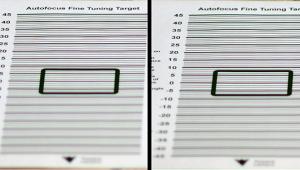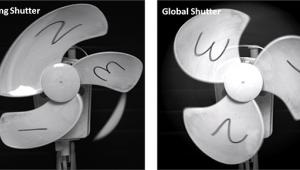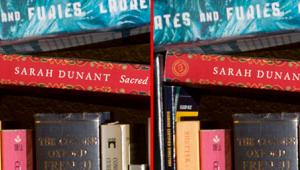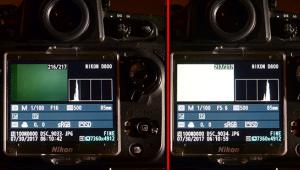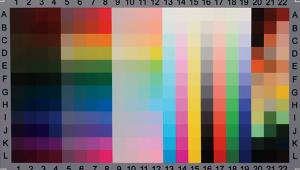Why Lens Coatings Are So Important: These Lovely Layers Are More Than Just a Pretty Face
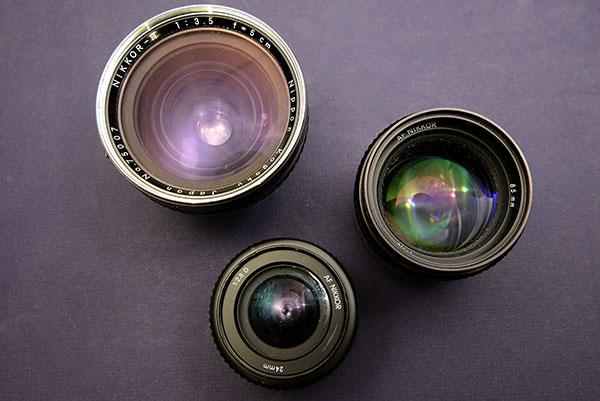
Among the most aesthetically satisfying features of a good lens is the lovely color of the front glass. Check out the ads trying to lure you to new optics, and you’ll see come-hither hues of blue, purple, or yellow—as tempting as a new car’s snazzy finish.
These very thin (five millionths of an inch) coatings are certainly attractive, but are they utilitarian? After all, few lenses made before 1941 had ’em, and those optics worked just fine.
Well, they didn’t work all that “fine.” Don’t sell coatings short. Without them, your lens collection would be small.
Here’s the problem: when light passing through air encounters some other transparent medium, it both bends (refracts) and bounces (reflects). The bending is what a camera lens is all about—it’s how the lens forms an image. Fill a glass with water and stick a spoon in it. Then look at the glass from the side and check out where the spoon enters the water. Refraction! You’ll suspect that Uri Geller has been messing with your flatware.
But look at the glass from above, and you’ll notice that the water also reflects some light, for example the fluorescents on the ceiling.
Clean water’s pretty darn transparent, but it still reflects some light. The glass in your camera optic is also transparent, but it typically reflects 3 or 4% of any incident light, no matter how much you clean it. When a light ray passes out the optic’s back end, the same physics applies, and you lose yet more light to reflection.
For a simple lens, the total light loss from reflection is maybe 7%, which is to say that about 93% of the light actually makes it through the optic. No biggie. But roughly 180 years ago, Joseph Petzval made a very successful camera lens having multiple elements. That started a trend, because more elements generally produce faster, sharper lenses.
Consider what reflective light loss would mean for a four-element optic, just as illustration. The fraction of transmitted light would be 0.93 x 0.93 x 0.93 x 0.93 = 75%. Today’s zoom lenses might have 10 to 20 glass elements, and, lacking coatings, only 48% of the light would make it through to your sensor—a loss of more than one f/stop. More elements, more loss.
There’s another problem. Much of the 7% reflected light bouncing off each element ultimately exits the rear of the lens, and fogs your sensor. Blacks are no longer black, and contrast and dynamic range won’t rise to the level of mediocre.
The punch line? Without coatings coming to the rescue to mitigate reflections at glass-air surfaces, modern lenses wouldn’t be practical. High-resolution, multielement optics would be a pipe dream for another universe.
But how do the coatings work? Despite the appearance of your lenses, these layers are actually colorless, and usually made of magnesium fluoride. But they’re very thin. Indeed, they are 1/4 the wavelength of the light whose reflection is to be mitigated. They also have to be intermediate in refractive power between glass and air.
So imagine a ray of light impinging on a coated lens. Some of that light is reflected from the coating, and additional light is reflected from the glass beneath the coating (because the coating and the glass have different refractive power). But the ray subject to the second reflection travels farther: an extra 1/4 wavelength coming in, and an additional 1/4 wavelength going back out.
The total extra path length from the second reflection relative to the first is 1/2 wavelength. That’s 180 degrees of difference, and the two rays cancel out! Like magic, all the light of that wavelength passes through the lens.
While this clearly eliminates the reflection loss, it does so only for one wavelength. But additional coatings can address the problem for other colors, and the best multicoated lenses will have reflections that have been cut to under 1% from deep red to deep blue. That’s greater transparency than the Norwegian government.
Coatings are more than cosmetic. They’ve made modern lenses possible. But in a future column, we’ll discuss some new technology that may make traditional coatings as obsolete as flash powder.
Seth Shostak is an astronomer at the SETI Institute who thinks photography is one of humanity’s greatest inventions. His photos have been used in countless magazines and newspapers, and he occasionally tries to impress folks by noting that he built his first darkroom at age 11. You can find him on both Facebook and Twitter.

